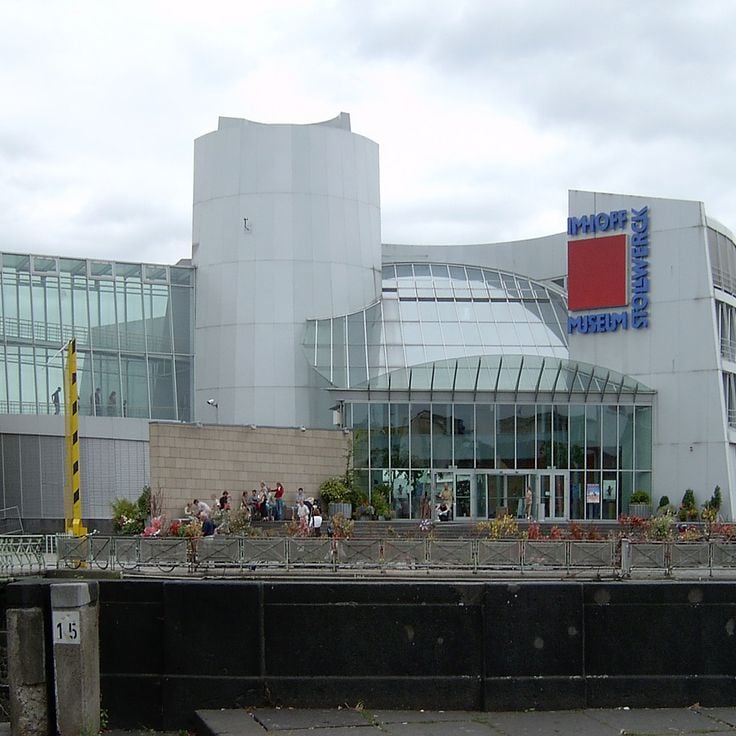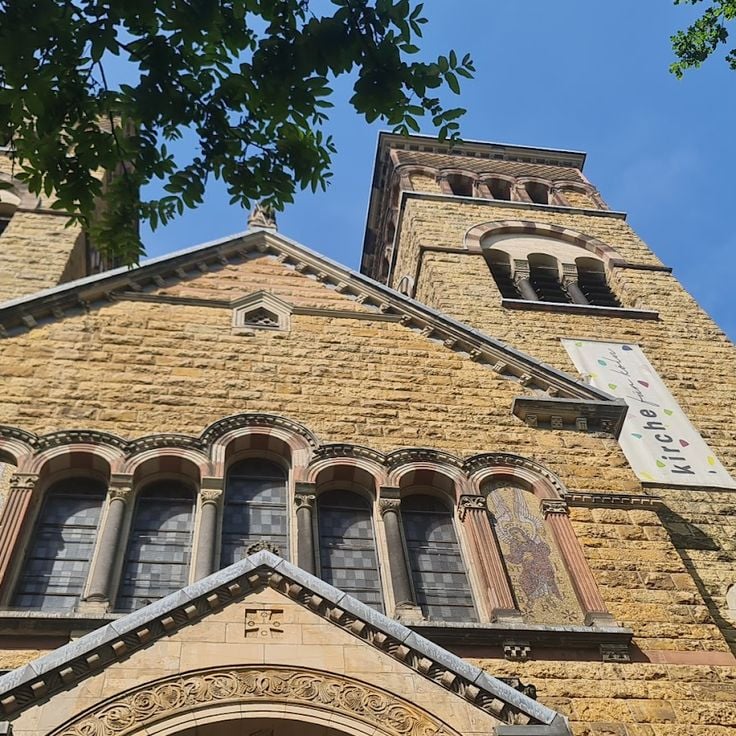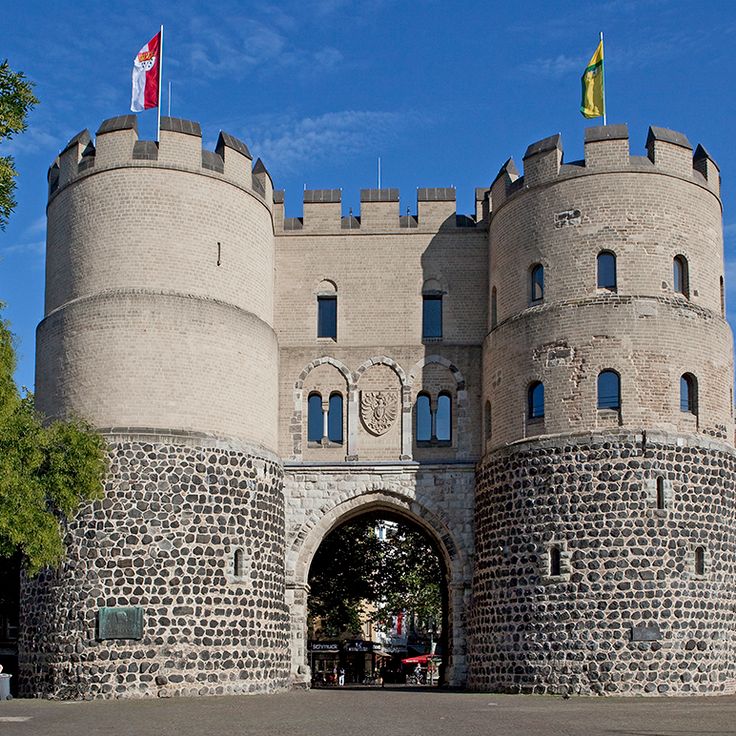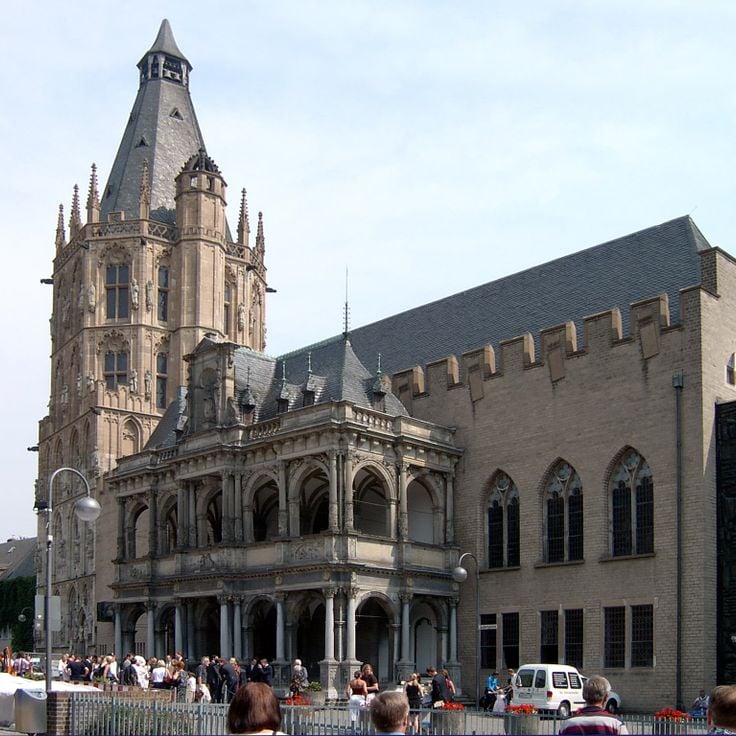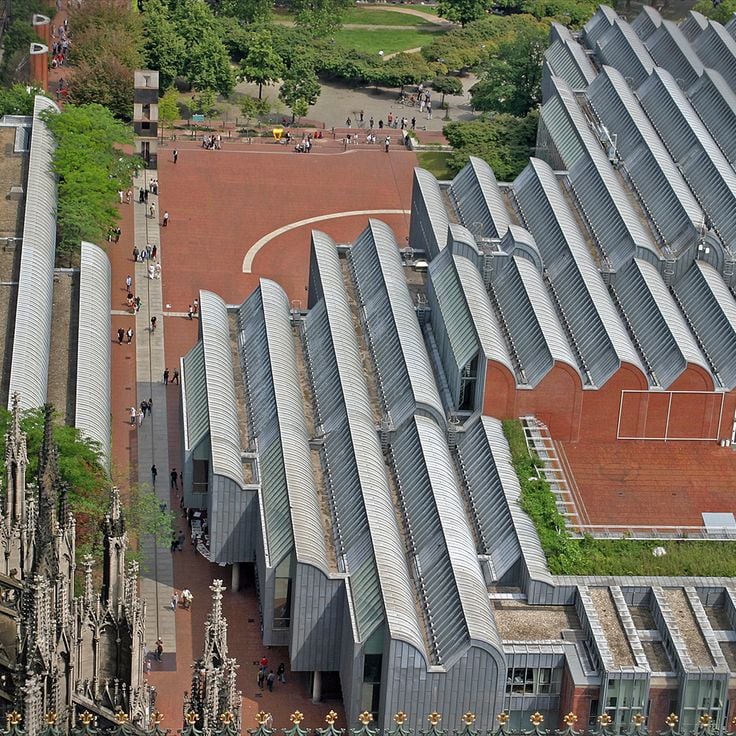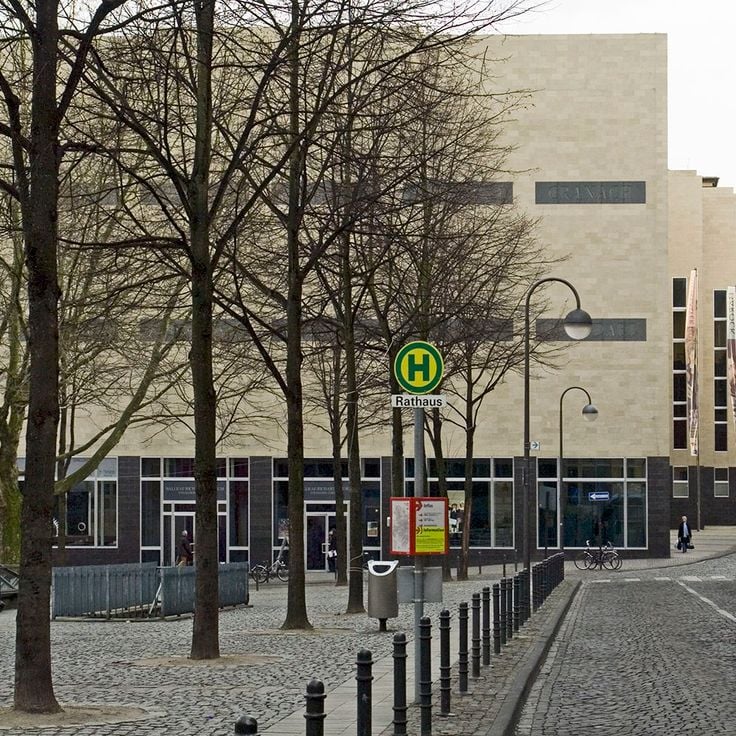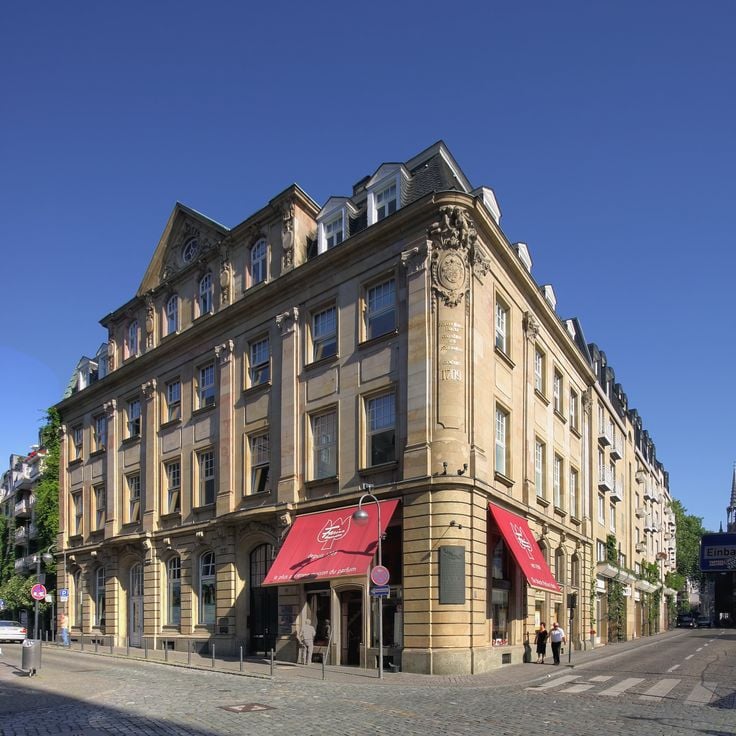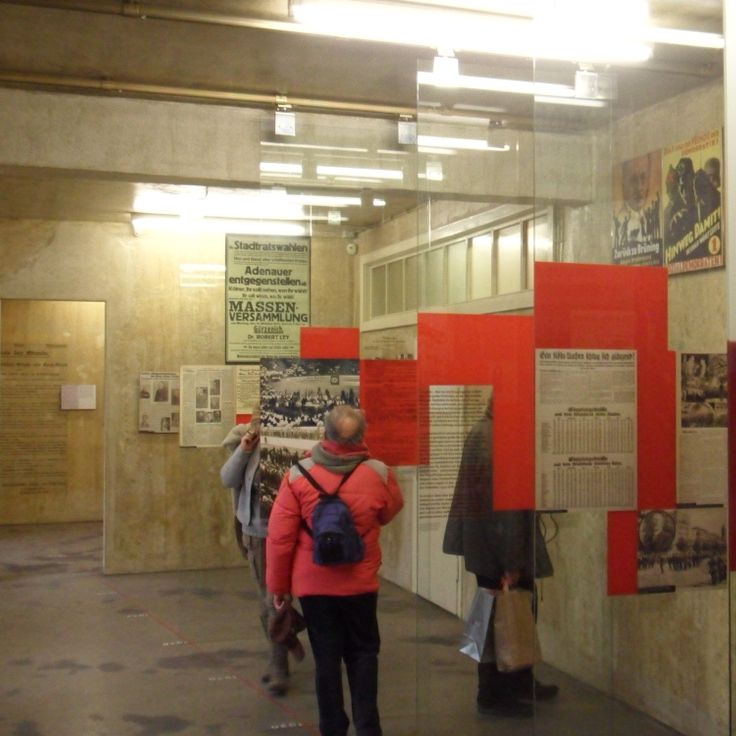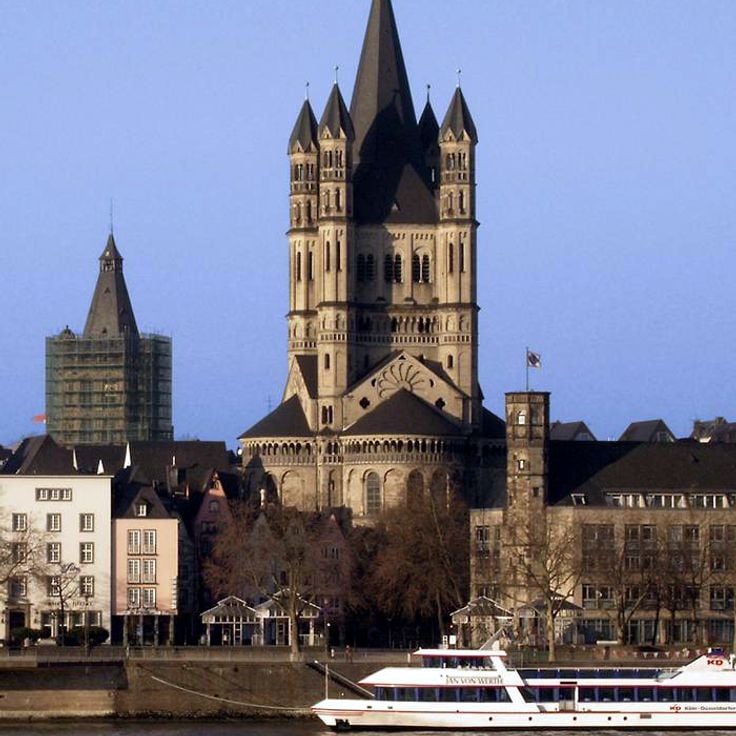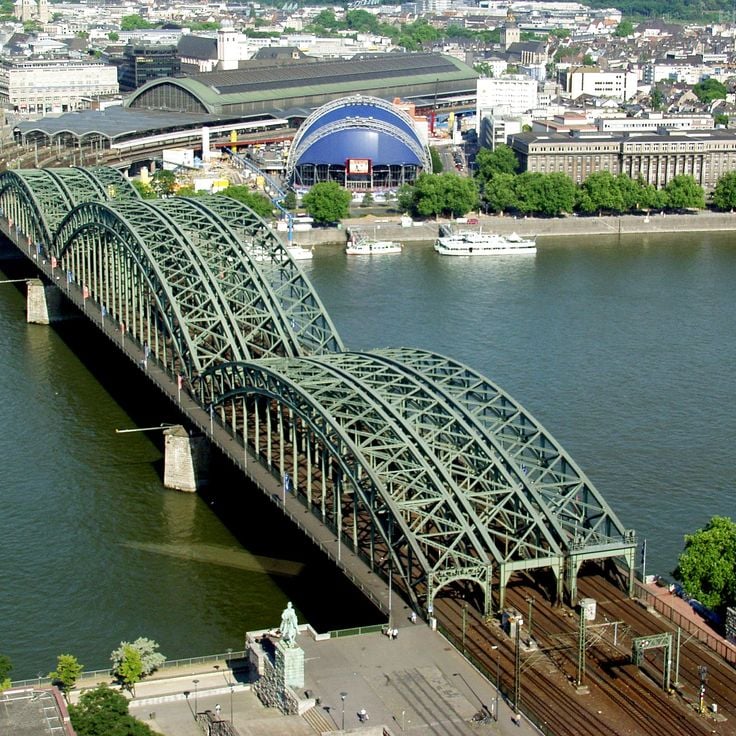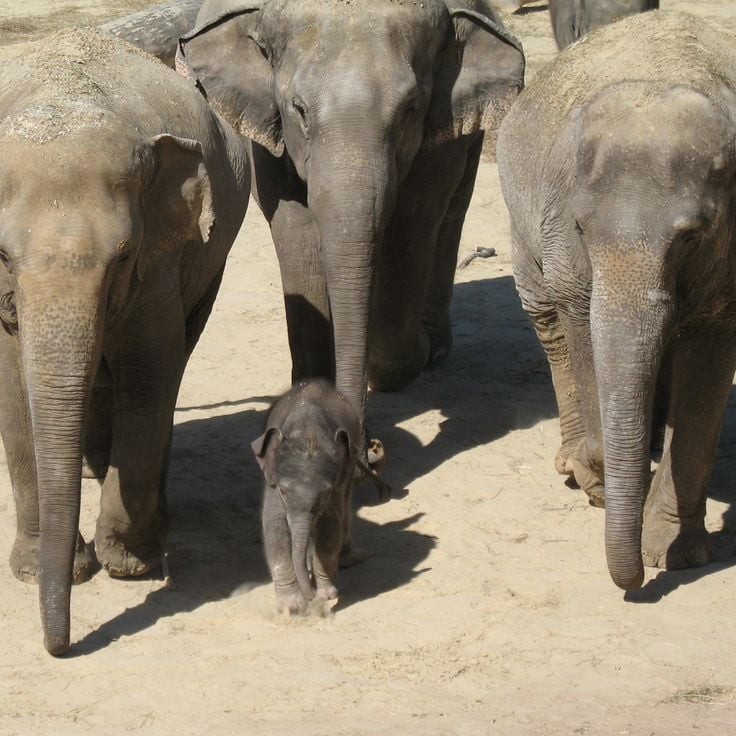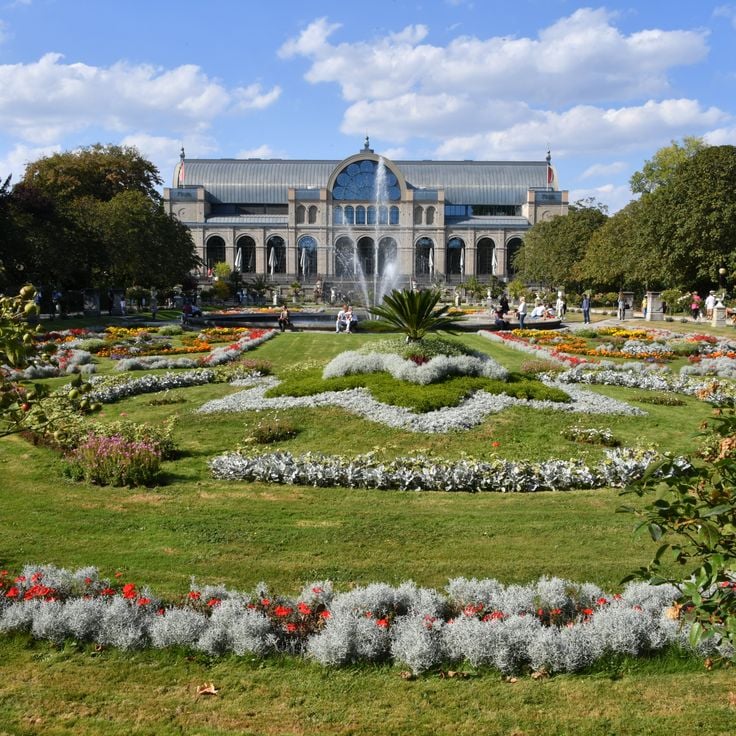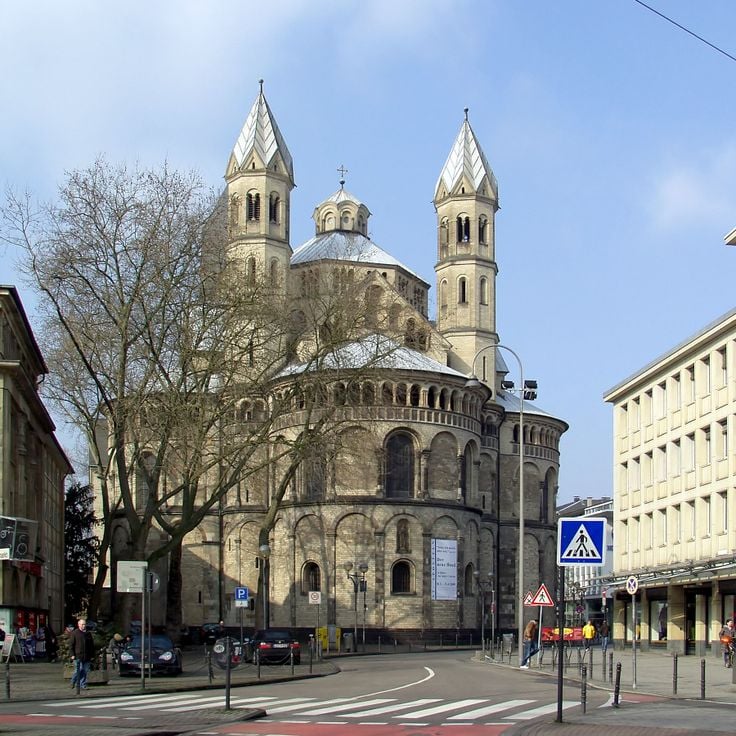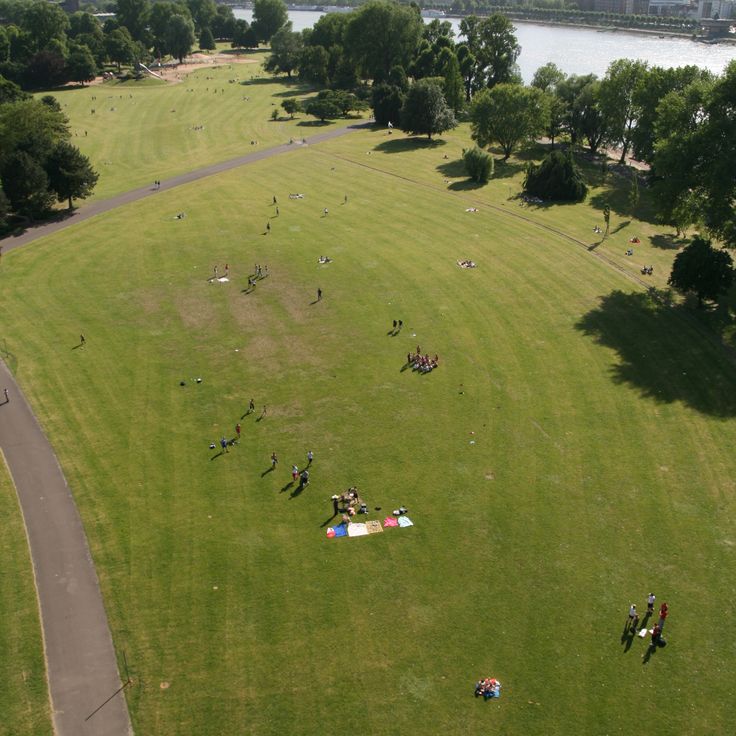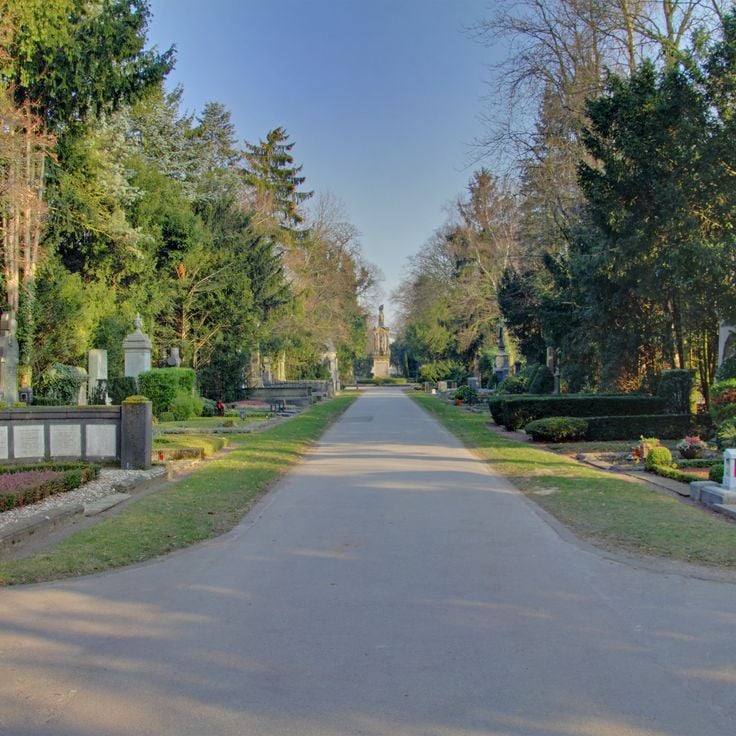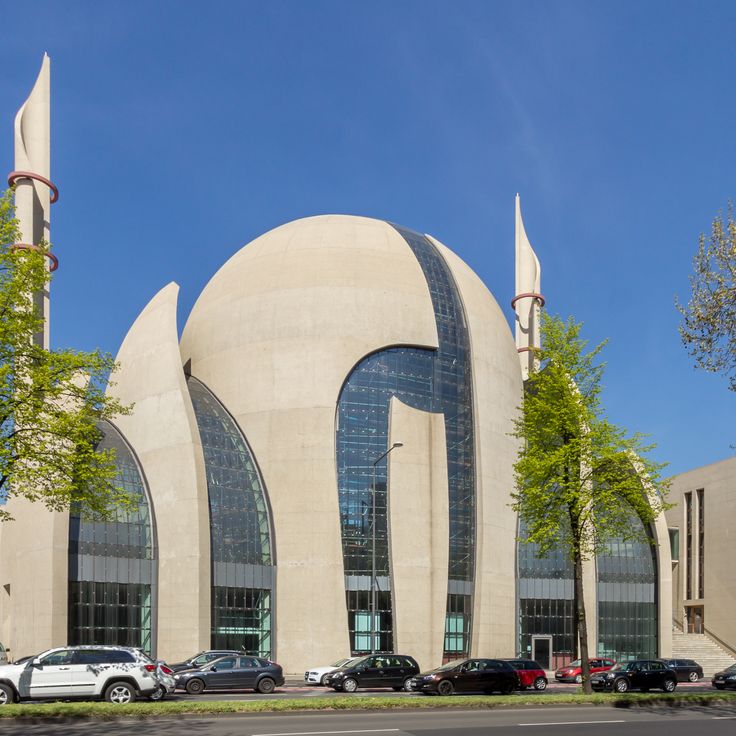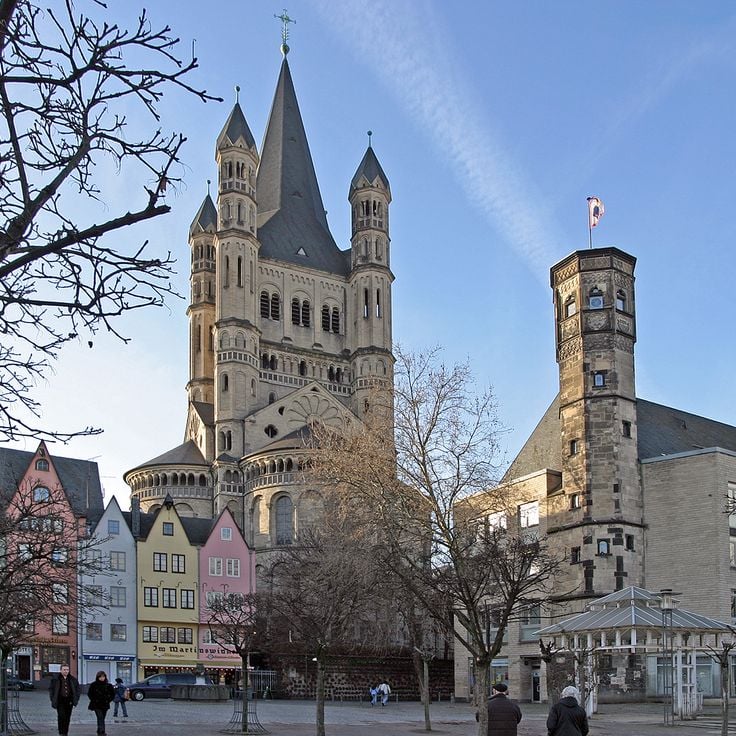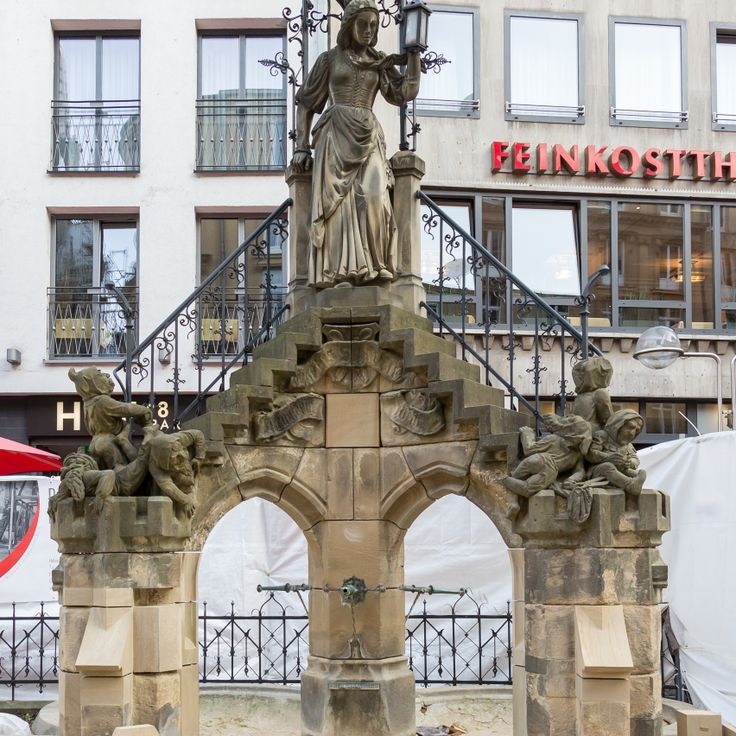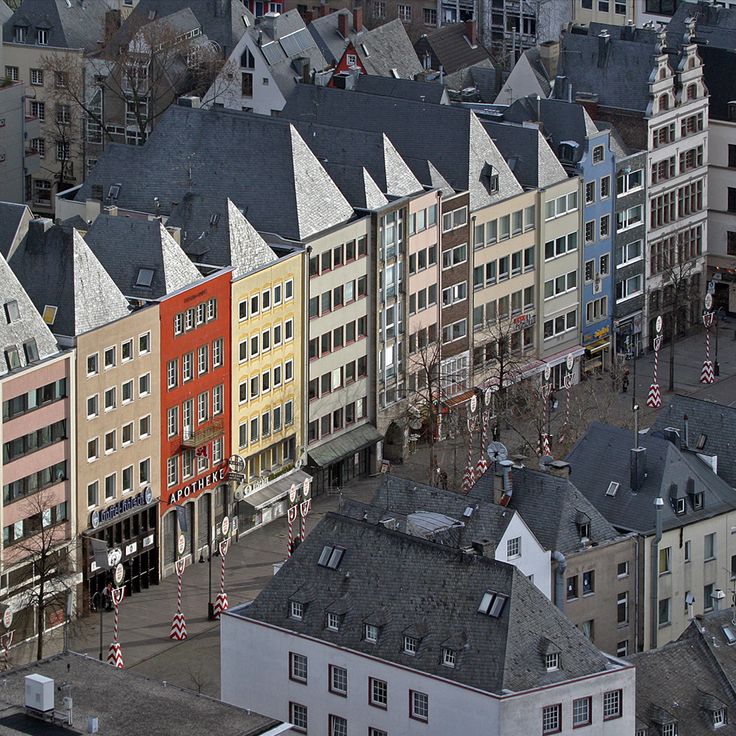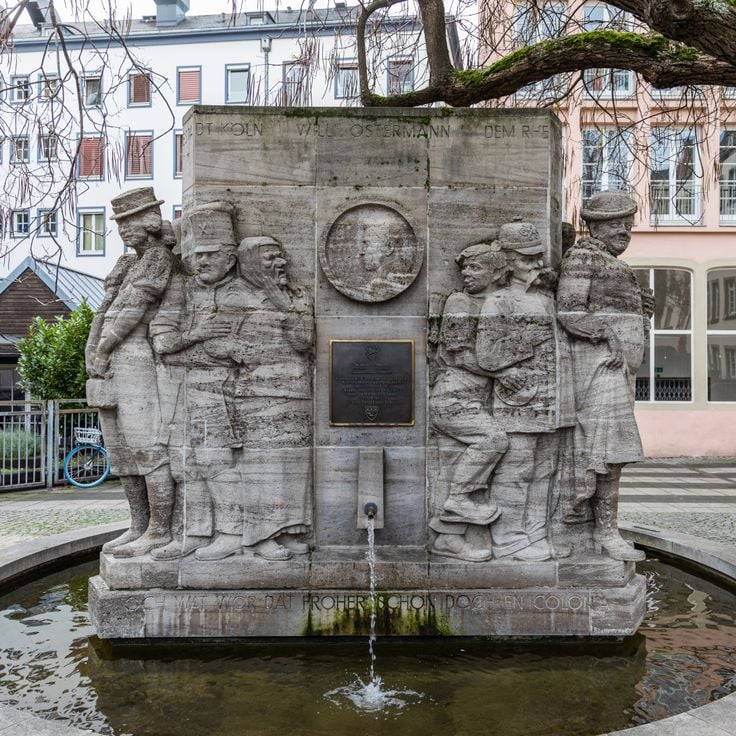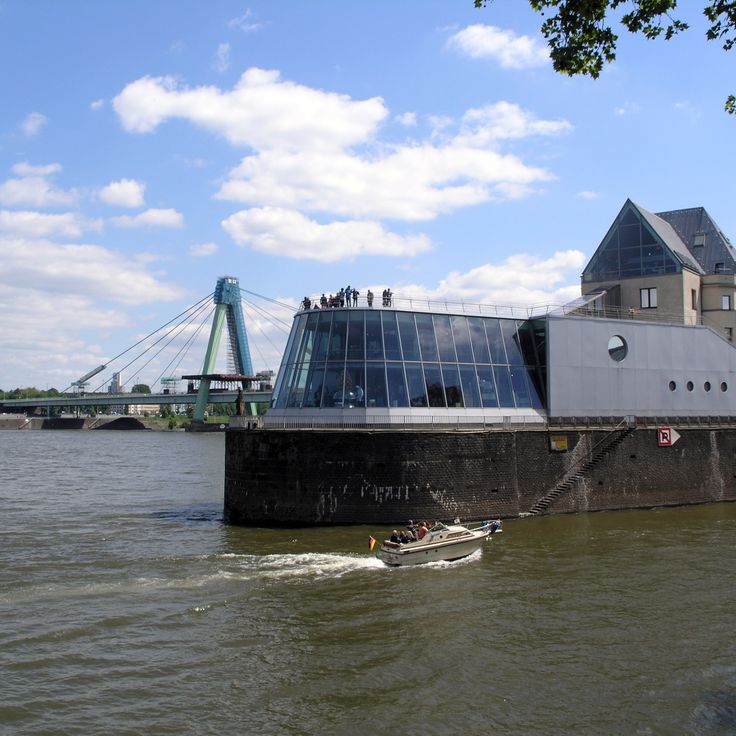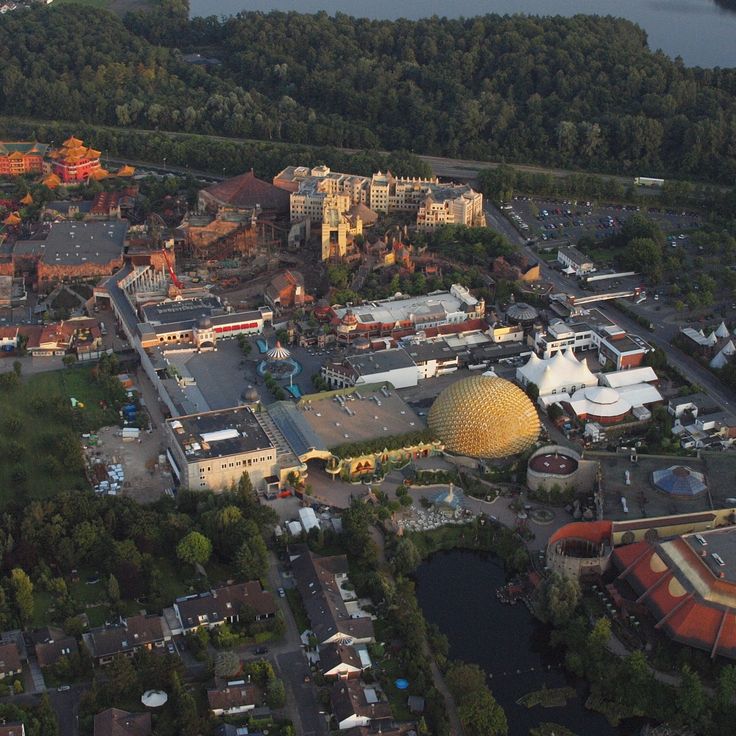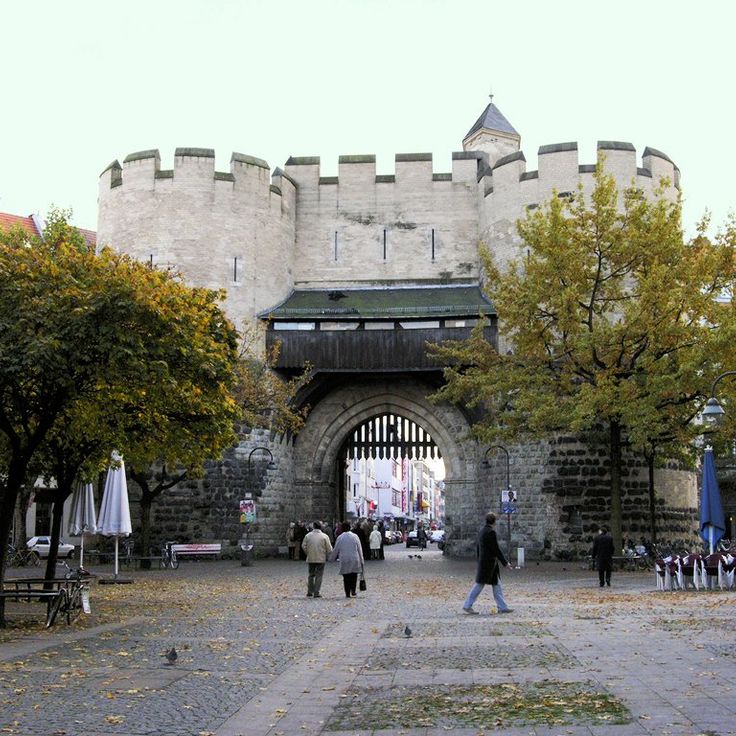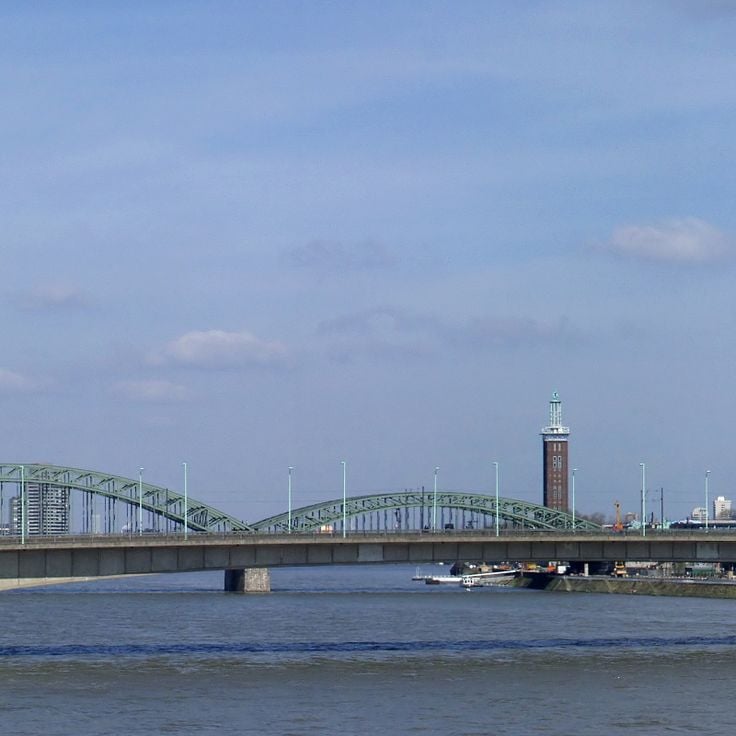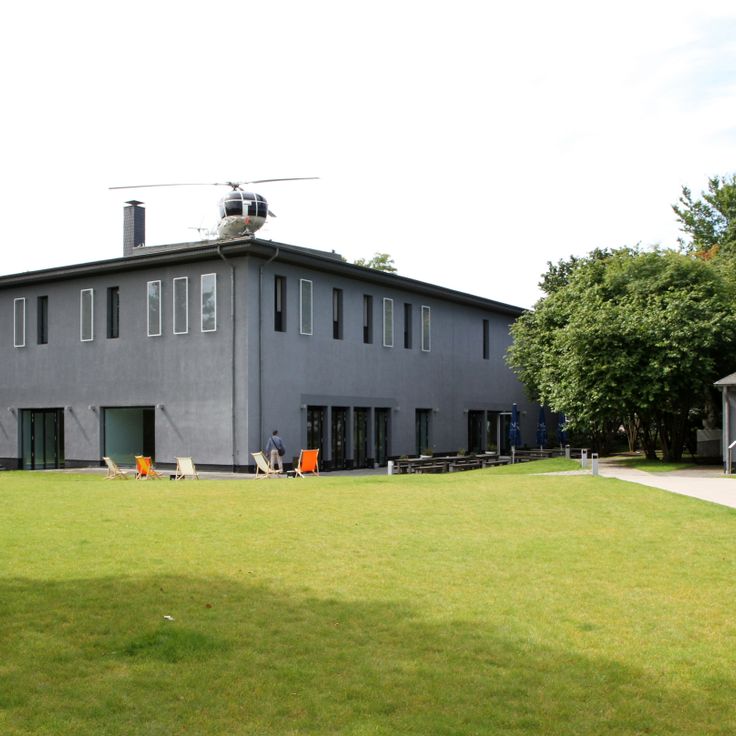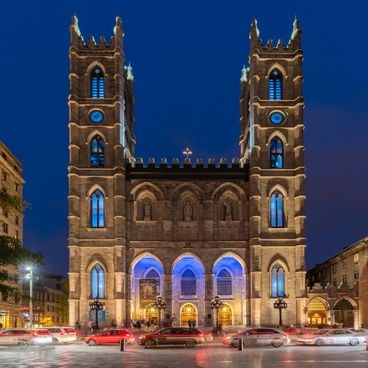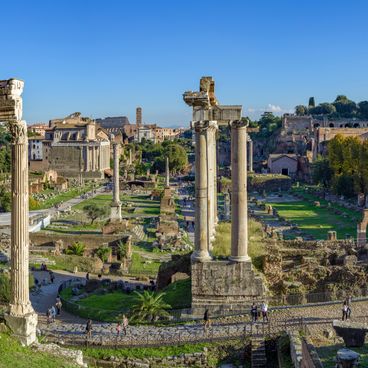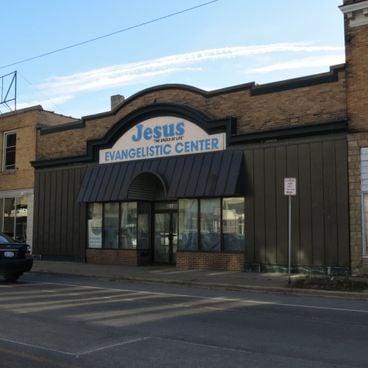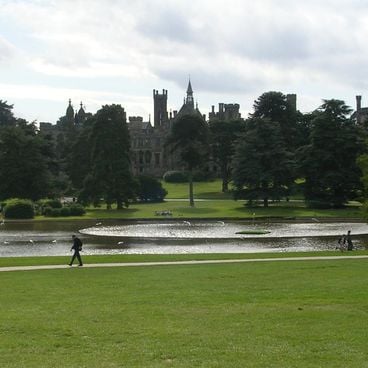Cologne, the fourth largest city in Germany, has stood on the banks of the Rhine for over two thousand years. This collection presents the main monuments, museums, and sites that trace the city's history from Roman times to the present day. The Gothic cathedral dominates the city center with its two 157-meter-tall towers, while remnants of medieval fortifications, such as the Hahnen Gate, testify to the defensive past of the city. The museums in Cologne offer a journey through the centuries. The Roman-Germanic Museum displays Dionysus’ mosaic and archaeological remains of the Roman colonia. The Wallraf-Richartz Museum houses seven centuries of European painting, from the Middle Ages to Impressionism. The Museum Ludwig contains one of the largest collections of pop art outside the United States, including major works by Warhol and Lichtenstein. The Nazi Documentation Center, located in the former Gestapo headquarters, documents the period from 1933 to 1945. The Chocolate Museum traces the history of cacao from Central America, while the Farina House remembers that Cologne has given its name to a world-famous fragrance since the 18th century.
Cologne Cathedral is a Gothic church building whose construction began in 1248 and was completed in 1880. The two towers reach a height of 515 feet (157 meters). Since 1996, the cathedral has been a UNESCO World Heritage site. The structure houses important works of art and relics, including the Shrine of the Three Kings from the 13th century. The cathedral stands in the center of Cologne and shapes the cityscape as the largest Gothic church building in Northern Europe with a floor area of approximately 86,000 square feet (8,000 square meters).
The Chocolate Museum in Cologne presents the history of cocoa from its origins in Central America to modern chocolate production in Europe. The museum displays the various stages of cocoa cultivation and processing, from the harvest of cocoa beans to the production of chocolate. The exhibition includes historical objects, interactive stations, and a glass production facility where visitors can observe the manufacturing of chocolate products. The museum offers tastings and features a fountain with liquid chocolate. The collection also includes information about the cultural significance of cocoa in pre-Columbian civilizations and the trade of chocolate in modern times.
This Catholic church in the Belgian Quarter near Brüsseler Platz was built in the early 20th century in the Romanesque Revival style. Sankt Michael Church serves the local parish as a place of worship and reflects the architectural preferences of its construction period. The building fits into the structure of the quarter, which is connected to Belgium through its street names and history. The Romanesque Revival design appears in the facade composition and the characteristic building elements of this architectural style.
The Hahnen Gate is a medieval fortification featuring two round stone towers, built in the 13th century as part of Cologne's city walls. The structure stands near the Rudolfplatz subway station in the city center and represents one of three surviving gates from the medieval ring wall. The towers rise to approximately 130 feet (40 meters) in height and display characteristic elements of Rhineland military architecture. This historic gate now serves as a landmark of the city and offers visitors insight into Cologne's medieval urban architecture.
Cologne City Hall dates back to the 12th century and combines architectural styles from the 14th through 20th centuries. The late Gothic tower from the 15th century features over 100 sculptures of notable figures from the city's history. A Renaissance arcade built in 1569 complements the medieval structure. Located in the heart of the old town, this city hall has served as the seat of municipal administration for 900 years. The building complex documents Cologne's administrative and architectural development across the centuries.
The Museum Ludwig is a leading museum of modern and contemporary art located next to Cologne Cathedral. This institution houses one of the most important collections of Pop Art outside the United States, including extensive works by Roy Lichtenstein and Andy Warhol. The museum also presents significant holdings of German Expressionism, Russian Avant-Garde, and an outstanding collection of Picasso works comprising over 900 paintings, prints, and ceramics. The modern building complex of glass and zinc was constructed in the 1980s and offers exhibition spaces across multiple floors for Cubism, Surrealism, abstract art, and contemporary photography. The museum documents the development of modern art from the early 20th century to the present day and ranks among Germany's most important art institutions.
The Wallraf-Richartz Museum houses the City of Cologne's extensive painting collection spanning from the Middle Ages through the 19th century. The museum displays works from the medieval Cologne School of painting, Dutch and Flemish masters from the 15th to 17th centuries, and French and German paintings up to the Impressionist period. The collection comprises over 3,000 paintings and 1,300 sculptures representing seven centuries of European art history. Named after founders Ferdinand Franz Wallraf and Johann Heinrich Richartz, the museum opened in 1861 and has occupied a modern building at Cologne's Rathausplatz since 2001. Highlights include works by Stefan Lochner, Albrecht Dürer, Peter Paul Rubens, Rembrandt van Rijn, and Edouard Manet. The museum also maintains an important graphic arts collection with approximately 75,000 sheets.
The Farina House hosts a perfume museum within the former family factory that has been producing authentic Eau de Cologne since the 18th century. The exhibition documents the development of fragrance production and displays historic manufacturing rooms, distillation equipment, and original formulas. Visitors learn about the tradition of cologne water production and can follow the various manufacturing steps that Johann Maria Farina established in 1709.
The Documentation Center on Nazism occupies the former headquarters of the Gestapo and documents the history of Nazi persecution and resistance in Cologne. The memorial site presents documents, photographs, and testimonies illustrating the persecution of political opponents, Jewish citizens, and other victim groups, as well as the activities of the local resistance movement between 1933 and 1945. In the basement of the building, original prison cells with inscriptions by former inmates remain preserved. The exhibition places local history within the broader context of Nazi rule and contributes to the examination of this period.
The Romano-Germanic Museum displays archaeological finds from Roman Cologne, documenting the city's history as Colonia Claudia Ara Agrippinensium. The collections include the 3rd-century Dionysus mosaic, which originally formed the floor of a Roman villa, along with pottery, glassware, jewelry, and everyday objects from ancient times. The museum documents Roman settlement in the Rhineland from the 1st to 4th centuries through burial goods, inscriptions, and architectural fragments. The exhibition also presents military equipment, coins, and sculptures discovered during excavations in Cologne and the surrounding region.
This 12th-century Romanesque church rises with its massive towers above the old town on the Rhine riverbank. After severe war damage, the building was reconstructed and fitted with modern stained glass windows that complement the medieval stonework. The church forms an architectural ensemble with the neighboring Stapelhaus, reflecting Cologne's history from the Middle Ages to the present day. The interior combines Romanesque structure with postwar elements.
The Hohenzollern Bridge connects downtown Cologne with the Deutz district and spans the Rhine River over a length of 1,345 feet (410 meters). This railway and pedestrian bridge was constructed between 1907 and 1911 and now serves as an important transit link for regional trains and foot traffic. The steel structure features three arched sections and is adorned with four equestrian statues of Hohenzollern dynasty rulers at its portals. Thousands of love locks attached by couples to the railings have become a defining characteristic of the bridge, making it a popular destination for visitors to the city.
Cologne Zoo was founded in 1860 and houses over 10,000 animals from 850 different species. The facility covers 51 acres (about 21 hectares) and is organized into themed enclosures and tropical houses. Areas include the rainforest house, the elephant enclosure, the hippodrome with hippos and Nile crocodiles, as well as sections for big cats, primates, and birds. The zoo participates in international breeding programs for endangered species and offers educational programs for visitors of all ages. As one of the oldest zoological gardens in Germany, it combines historic architecture with modern animal care concepts.
The Flora Botanical Garden covers 11 hectares (27 acres) and was established in 1864. It presents European and tropical plant collections in historic greenhouses made of cast iron and glass. The grounds include several themed gardens, among them a rhododendron grove, a rock garden, and Mediterranean sections. The protected glass structures from the 19th century display palms, cacti, and other tropical plants. The garden serves as a scientific facility for botanical research and a public recreation area with walking paths, ponds, and lawns. An adjacent café and historic event hall complement the grounds.
Saint Apostles Basilica is a Romanesque church built in the 11th century in Cologne, featuring a trefoil floor plan with three apses. The structure displays typical elements of Ottonian Rhenish architecture, including its characteristic towers. As one of the twelve large Romanesque churches in Cologne, Saint Apostles ranks among the important medieval religious buildings of the city and documents the architectural development of this era along the Rhine.
Rheinpark stretches along the right bank of the Rhine River and provides open lawns, maintained garden areas, and playgrounds for children. From this park, visitors can view the old town of Cologne with the cathedral rising on the opposite riverbank. Paved walking paths run through the grounds, which form one of the larger green spaces in the city and serve both for relaxation and recreational activities.
Melaten Cemetery was established in 1810 and serves as the burial ground for bourgeois families, artists, and local figures. This cemetery spans 4,680,000 square feet (435,000 square meters) of tree-covered parkland and houses numerous funerary monuments from different periods. The grounds combine historical significance with landscape design and document Cologne's urban history through their burial sites and architectural elements.
This mosque is a religious center in the Ehrenfeld district that opened in 2018 for the Muslim community. The complex includes a prayer hall with seating for 1,200 people, a cultural center, a library, and a garden. Designed by German architect Paul Böhm, the building combines traditional Islamic elements such as a dome and minarets with contemporary architecture and provides spaces for religious services, educational programs, and community activities.
This rebuilt district after World War II preserves its medieval layout with public squares, Romanesque churches, restored half-timbered houses, and Roman remains. The quarter extends along the Rhine riverfront and includes several historic areas, among them the Alter Markt and Heumarkt, which serve as central gathering places. The architecture combines reconstructed historic buildings with modern structures and demonstrates the city's two-thousand-year history from Roman colony to medieval trading center.
This bronze fountain installation from 1899 commemorates the Heinzelmännchen, small household spirits from Rhineland folklore who secretly performed the work of Cologne residents at night. The fountain sculptures depict various scenes from the Heinzelmännchen tale, including the curious tailor's wife who spied on the industrious creatures with a lantern and thus drove them away forever. The fountain stands at the Fischmarkt in the old town and ranks among the city's most recognized monuments documenting its connection to local legends.
This paved square in the historic center is home to restaurants with outdoor terraces, traditional cafes, and the famous Christmas market in winter with its decorated wooden chalets. The Alter Markt has served as a social gathering point for centuries and forms an important part of the Cologne Old Town near the Rhine riverfront, together with the nearby city hall.
The Fishwives' Fountain is a sculptural monument in the old town of Cologne that honors the fish vendors who sold their goods at the city's markets for centuries. This fountain depicts these historical figures of Rhineland commercial life and commemorates their important role in supplying the population with fresh fish from the Rhine and its tributaries. The monument stands in the historic center and represents part of the city's cultural memory.
These riverside paths along the Rhine connect the old town with modern districts and provide pedestrians and cyclists with direct access to the river. The paved walkways run along the water and offer views of the Hohenzollern Bridge, the cathedral on the opposite bank, and the surrounding urban architecture. The Rhine promenade serves as a connecting route between different neighborhoods and as a recreational area for residents and visitors.
Phantasialand is an amusement park in Brühl that features roller coasters, themed areas, and shows across 69 acres (28 hectares). Opened in 1967, the park attracts over two million visitors annually and ranks among the major leisure destinations in the Cologne area. The attractions include several themed zones with rides of varying intensity as well as regular entertainment programs.
The Eigelsteintorburg is a fortified city gate built in 1230 as part of Cologne's medieval walls. Standing 131 feet (40 meters) tall, the tower secured the northern approach to the city and served as a military defense point. The gate marked the main northern entrance to Cologne and displays typical Rhineland defensive architecture of the 13th century with its characteristic twin towers and central passage.
The Deutzer Bridge is a combined railway and road bridge spanning the Rhine River in Cologne, completed in 1948 and extending 2257 feet (688 meters) in length. This bridge connects the left bank of the Rhine with the Deutz district on the right bank, serving both vehicular and rail traffic. The structure was built after World War II, replacing earlier bridge constructions that were destroyed during the war. The Deutzer Bridge forms an important transportation hub within the Cologne urban area, providing connectivity between the eastern districts and the city center.
This building, founded in 1792, is the location where Johann Maria Farina created the first eau de Cologne. It houses a collection of historical objects and antique bottles documenting the evolution of this traditional perfume industry. The House 4711 is among the notable historical sites in Cologne and illustrates the centuries-old tradition of perfume making that gave the city its name for this type of fragrant water.
This sculpture park covers 40 hectares (99 acres) along the Rhine riverbank and has displayed over 60 sculptural works by international contemporary artists since its opening in 1997. The green space combines walking paths with permanent and rotating art installations, with exhibited works representing different artistic approaches and materials. The park serves as an accessible exhibition venue for sculpture in public space and complements the city's cultural offerings with a connection between nature and art.

